Behind the Wheel of a Monte Carlo Yacht
Oct 02, 2017
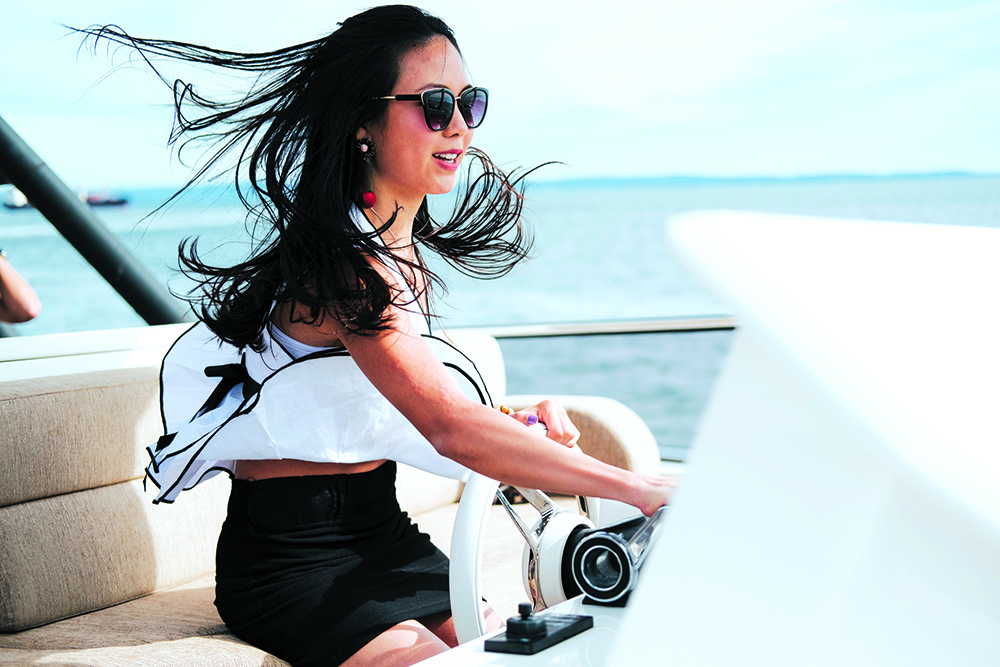
Life can deliver moments that, even as you are living them, you know you will reminisce about for ever. I had one such moment in Italy, in the Gulf of Trieste, when I first took the helm of a motor yacht. What made the experience especially memorable was helming an immaculate MCY 86 by Monte Carlo Yachts.
As the vessel sped through the water at full pelt, 30 knots, the sprawling mansions of Portopiccolo came into view, bathed in the midday sun. The sight was so outrageously spellbinding that it will remain etched in my mind for as long as I live.
A smooth sea never made a skilled sailor and Monte Carlo Yachts was born amid the global financial turbulence of 2008. The shipyard, owned by French boatbuilder Bénéteau, made motor yachts that meshed the company’s know-how with French and Italian style so beautifully that in less than a decade these machines have become coveted.

I disembarked in Portopiccolo to feast to my heart’s content in one of the best restaurants there, all the while wondering at the spectacular views of the sea, then boarded for the run back to the shipyard at Monfalcone. Time seemed to speed up as the moment drew near when I would have to step ashore from this floating private island and revert to being an ordinary landlubber. I prayed for the moment to last forever. On arrival at the shipyard I was greeted by a stunning sight: an array of vessels in various stages of construction. My sighs gave way to a quickening of the pulse and a stream of exclamations of awe.
My short cruise on an MCY 86 offered an inkling of the torment of yearning a buyer must suffer in the interval between ordering one and accepting delivery. To keep that interval to the minimum, Monte Carlo Yachts uses a cutting-edge modular construction process that sees the components manufactured in concert so they are ready to fit together at exactly the right moment.
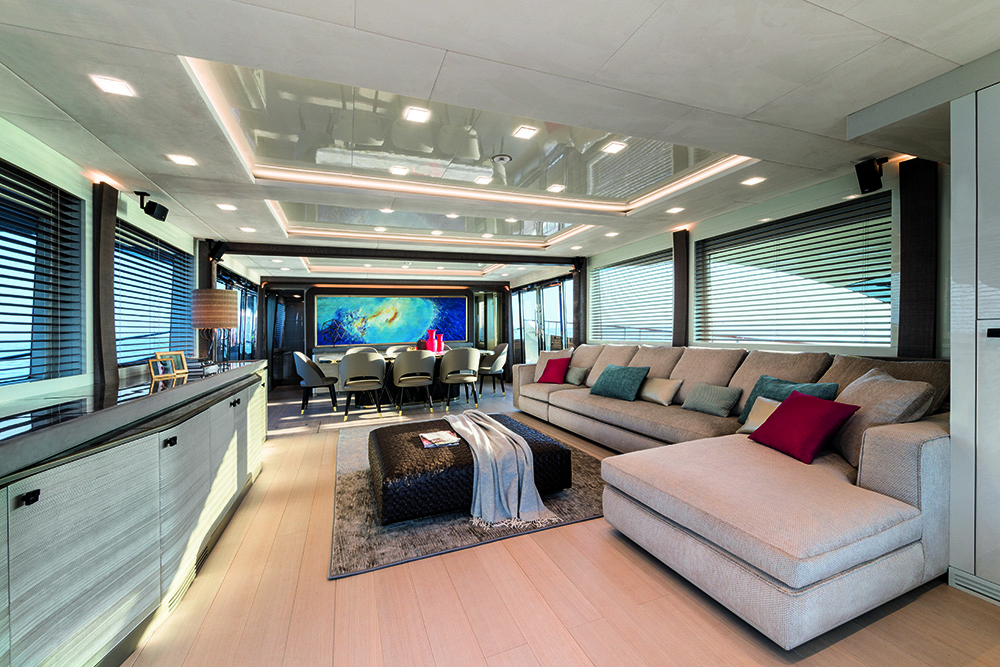
Having the hull, machinery, superstructure and interior fittings of the motor yacht to hand as they are needed can halve the time it takes to build the vessel, makes for a better finished product and allows greater customisation.The modular construction process means it takes just three months to build the smallest type of vessel made by Monte Carlo Yachts, the 65-foot MCY 65, and five months to build the biggest, the 105-foot MCY 105.
The cruise in a MCY 86 was still fresh in my mind the next day, when I visited the Nuvolari Lenard studio, on the outskirts of Venice, where renowned yacht designers Dan Lenard and Carlo Nuvolari draw up plans for vessels made by Monte Carlo Yachts, Oceanco in the Netherlands, Lürssen in Germany and Bénéteau in France. They are responsible for designing Steven Spielberg’s The Seven Seas, the most expensive yacht in the world to charter, which runs to more than US$1 million a week.
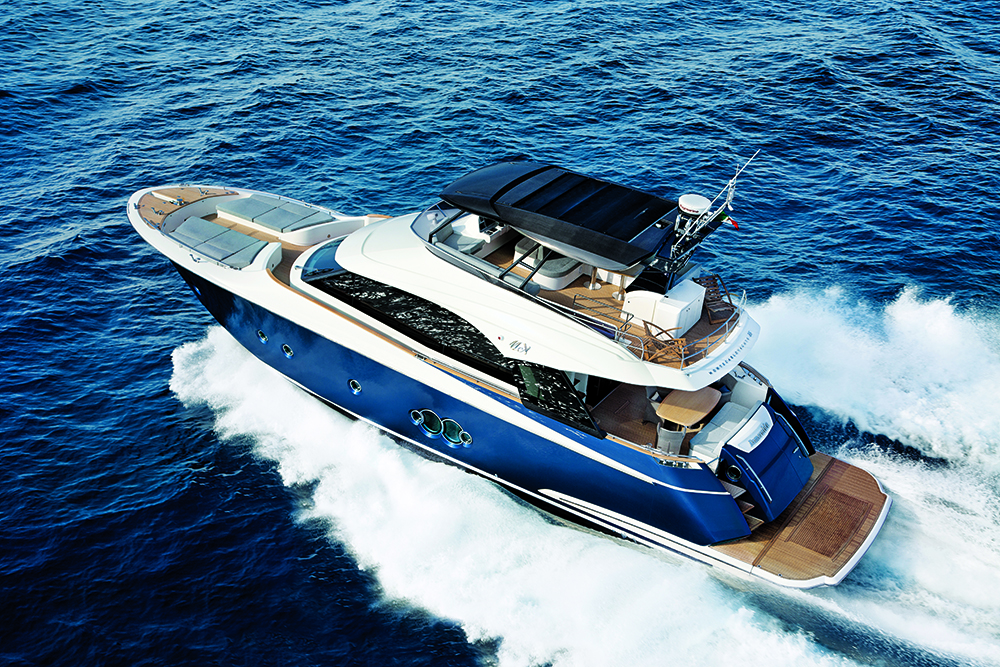
Lenard is the designer and Nuvolari the naval architect and mechanical engineer, but each knows the other’s business, having shared almost three decades of experience. “We complement each other like yin and yang,” Nuvolari says. “We always try to find the blind spot together and achieve harmony like an orchestra.”
Lenard and Nuvolari may be surrounded by Italy’s captivating architecture and scenery, but their work involves more than just making a vessel look stylish. While pleasure may be the main purpose of owning a motor yacht, ensuring the vessel is safe is an overriding concern.
That said, the pair apply themselves to designing dream pleasure boats in the finest detail. “Sometimes customers don’t know what exactly they want and we have to intuit that for them,” Lenard says. “It’s like we are dreaming for them, when their capacity to dream ends. We have to think like them, enter their minds, and to dream for them. What we never do is enforce or impose any ideas on our clients.”
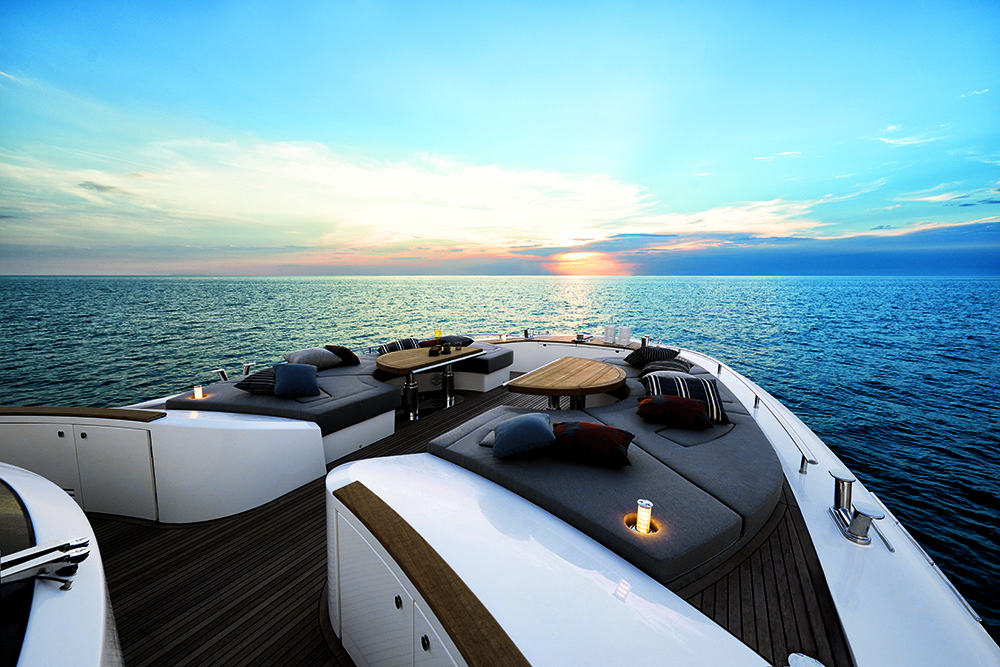
Dreaming big can be costly. “For interior design, I think yachting has the best budget,” Lenard says. “In a yacht, we don’t have a painted wall, which is common in houses and hotels, as one doesn’t decorate every wall in a house. But on a yacht, it’s like a car: the structure, cables, pipes and so on have to be hidden. We have to cover every inch of the interior on a boat and that requires budget.
“Another difference is the number of materials used. In an average car interior, maybe you have 20 materials, while for an average house interior, you can boost the number to about 50 in one room. We might use more than 200 materials in one room on a yacht, without it looking over-decorated.“It’s because we have to make sure the different materials speak the same design language. It’s really rewarding that we are able to achieve this in the boat industry. It’s also why, sometimes, interior designers for houses could get a little confused when they design for a yacht. They might not be used to operating with so much creativity in small spaces.” Many precious woods and other expensive materials are used in the vessels made by Monte Carlo Yachts.
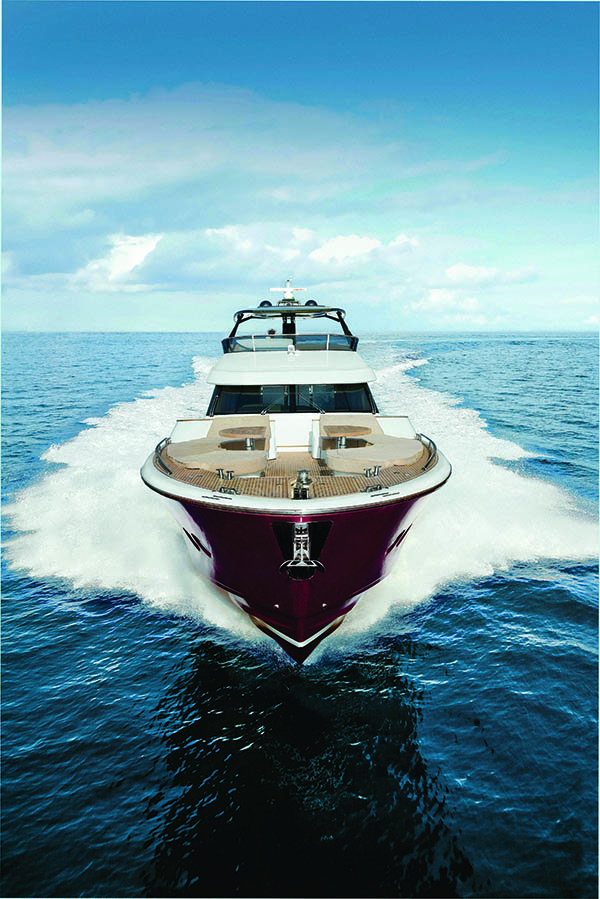
The MCY 86 I helmed has interior features made of white alabaster from Volterra, Cedarstone marble, Moka Cream limestone and Murano glass made by hand in Venice. The yacht features fittings and furnishings made by design houses such as Hermès, Armani, Poltrona Frau and Pierre Frey.
Why do the designers specify such a wide variety of materials? “Apart from the fact that we can,” Lenard says, “we do so because we are trying to create an experience that doesn’t feel like anything else. When you are on a yacht, it shouldn’t remind you of a hotel you stayed in. It should be a unique experience, what we call the ‘superyacht experience’,” he says.
“That’s why people love yachting. It feels different from anything else in the world. Otherwise, there is no way to justify the budget we are operating with yachts. Yachts are absolutely the most expensive things among the most useless things in the world.”
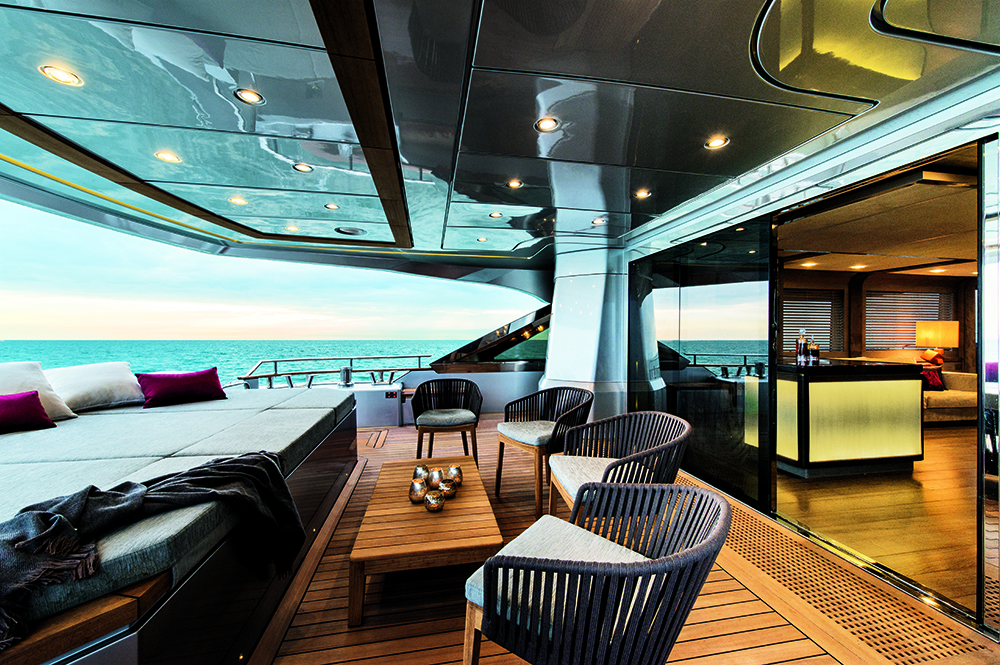
Lenard believes there are a million justifications for owning a private jet. “But why a yacht? It’s difficult to justify, except for a really strong experience. Even chartering a yacht is the same thing. Why would you charter a yacht for hundreds of thousands of dollars when you can spend the same amount for a whole resort in the Maldives and invite every friend you have ever met for a week? Yachting is an extreme experience. And to create this extreme experience, we have to go with an extreme approach in design.”
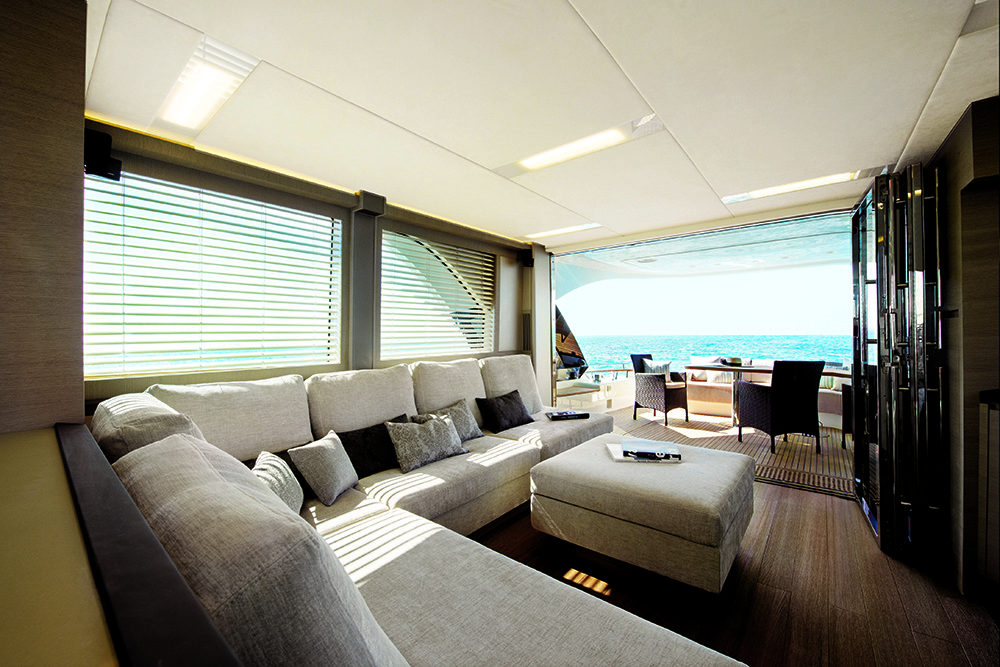
Companies now buy motor yachts for coldly calculating and practical purposes, such as business entertainment of a sort that is several rungs higher up the ladder than a round of golf or an incentive trip. A private motor yacht, in contrast, should be chosen with the heart, rather than the brain, the designers say. A motor yacht is the sort of investment that fails to hold its value. The vessel may depreciate more slowly than a car but its value drops by one quarter as soon as the new owner weighs anchor.
Lenard says the strongest justification for spending bank-breaking sums on a motor yacht can only be for the unmatchable experience. Happiness is the least tangible of all returns on an investment. Owning a superyacht, feeling the wheel in your hands and conning the endless ocean in front of you as it beckons you to experience all of the exciting places to be found on its shores, is the nearest thing to happiness that money can buy.
This article first appeared in the October 2017 print issue of #legend magazine.



























